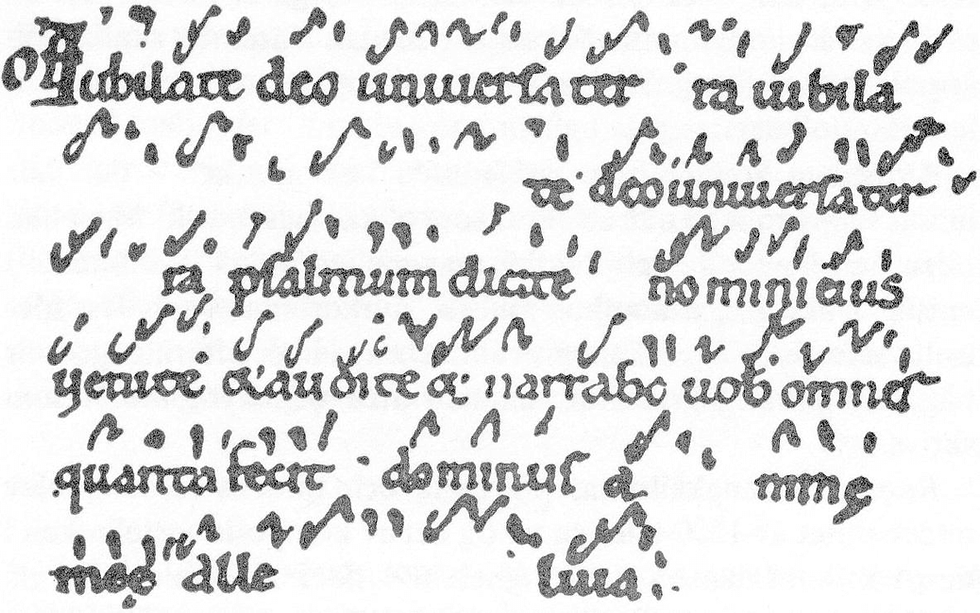How Guido of Arezzo Changed Neumatic Scale to Five Staves
- Rosa Mistyca
- Jul 25, 2021
- 3 min read
Let’s continue from last week’s article! After the neumatic system to categorise monasterial plainchants, how do you think music developed even more? It grew more and more interesting!
Back in the year 1025, the Medieval era where people’s livelihoods were still depending heavily on the aristocracy, clergy, and agriculture. People rarely expressed themselves at that time, as they used to toil hard to support their families, and time to ponder about creativity was rather a luxury. However, for the monks in the pedagogies who taught choirs to people, 1025 was a marvelous year for music. That was the year where Guido of Arezzo moved to a Tuscan city, where he commenced his stellar approach to music.
Guido of Arezzo was a Benedictine monk and music theorist of the medieval era. Guido pioneered self-expression through music in Western Europe, and developed structures to music to enable readings. He had been regarded as the inventor of modern music notation, which replaced the conventional neumatic notation. Guido organized pitches into groups called hexachords, which were similar to scales, where he also took as a step to invent the solfege (do, re, mi, fa…).
As we have known, before Guido, liturgical music was solely notated by neumes, which are the markers on top of each chant to show slide up, down, twist, or turn. On a neumatic scale, there were no readable notes to guide you when and how to sing, instead, your sheet music would simply indicate the contour of the melody.

Example of a neumatic chant
Clearly, the children - and adults, were struggling to get better. Guido observed their struggle to master a single repertoire, and instantly thought to resolve their pain. He then came up with the staff, which had four lines - instead of five as we use today in Ensiklomusika Music School’s private music lesson. He coloured the lines to differentiate each note, in order to direct musicians to better detect the pitch’s level.
Guido’s staff had resolved one part of repertoire mastery, however, it had not perfected the entire musical notation system. As time progressed, other musicians had helped perfect it by adding mensural notation. It is a marking to indicate the length of a note, or even silence, which now has been used in secular vocal music lessons, even in our music classes.

Neumes in a five-line staff, readable now, right?
Then, around the 17th century, instrumental music started to dominate the stage. Many musicians helped to establish the musical notation we currently use. They were considering few factors at that time; limitations some marks carried against some instruments than the vocal cords. Over time, experienced musicians developed barlines, stylized clefs, dynamic markings, ties, and slurs onto musical notations. It’s now super easy to read and learn, right?
Next time, when you hear a song, think about the music. No, not about how it sounds, but rather about the written score or sheet that operates the whole song. Try to envision what the musicians that produce that song think while playing the score - it would be an interesting experiment to do! Musical notation is complex, and it requires complex minds to be able to express ideas in a beautiful way to your ears.
Would you - or your little ones, like to learn how to be a musician? No, you don’t have to invent the solfege, yet you can master a musical instrument from scratch. My team and I in Ensiklomusika Music School will be able to assist you to grow alongside music. You can learn to master the instrument of your choice while being able to aptly read the notation like reading an Instagram caption! The classes come in a group or private lesson; enquire with us to find out more!
By the way, what do you think about the theory of music? Let us know in the comment section below!

Comentários